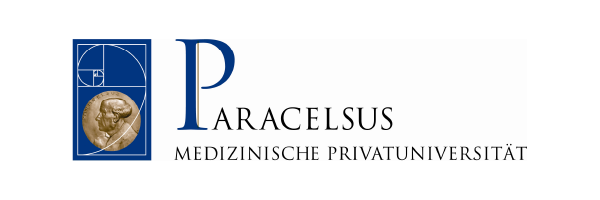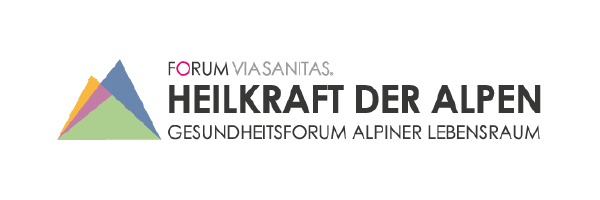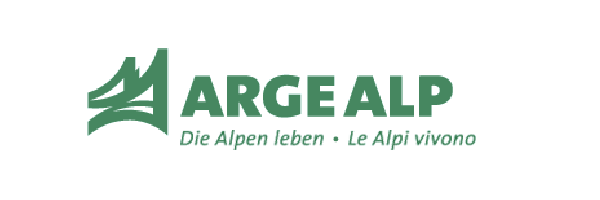Ordinance enters into force on Wednesday, 30 June 2021 – limited to five years for the time being
The so-called Infinity pool above the Königssee in the course of the Königsbach has become a world-famous visitor magnet. This development has increasingly endangered the soil, flora and fauna in the Berchtesgaden National Park. Therefore, after a close examination, the decision has now been made to close the area around the Gumpen for five years. This is to give nature time to recover. The regulation has entered into force on Wednesday, June 30, 2021.
With its special view on parts of the Königssee, the Gumpen in the Königsbach waterfall forms an attractive excursion destination in the Berchtesgaden National Park. While the Gumpen used to be an insider tip, in recent years they have become a tourist attraction, especially among the younger generation. In particular, the so-called infinity pool in the upper part of the waterfall cascade achieved great popularity far beyond the region via numerous posts in the social networks in a short time. The media attention inevitably led to a massive increase in visitor numbers.
Only two small paths formed the traditional access to the area around the Gumpen, which was previously only used to a small extent by locals. Due to the rapid spread in social media and on outdoor platforms, these paths are now known to a worldwide public, the number of visitors has multiplied significantly. A survey from the summer of 2020 showed an average number of about 150 visitors per day on weekends, but far more than 350 on peak days.
As a result, in recent summers, a wide-ranging network of trails with a length of at least three kilometers has newly formed. As a result, the entire area is massively disturbed – the individual paths that converge again and again are sometimes over several meters wide. Especially in the immediate area of the Gumpen, the topsoil is massively damaged due to the high visitor frequency. Due to the destruction of the vegetation, the topsoil lies free in the steep slopes and is further eroded by the mechanical load and the onset of water erosion. In many places, the fine roots of the surrounding trees are exposed over a large area.
Numerous animal species, including strictly protected bird species, are also significantly disturbed by the massive flow of visitors.
The ordinance, which the Berchtesgadener Land District Office has issued is intended to contribute to the recovery of vegetation over the next five years as a building block in the context of visitor guidance, as well as to support the closure of the soil wounds by natural succession.
The purpose of the Berchtesgaden National Park is to protect nature. The development of the area for the population for educational and recreational purposes is always subject to the protection of nature. The prohibition to enter the areas specified in the map (annex) is, in view of the circumstances, a necessary measure to prevent further impairments. The area mainly includes those areas that are damaged by the newly created trampling paths. In total, it is about 10 ha of the area of the Berchtesgaden National Park, which covers a total area of more than 20,000 ha.
A seasonal interruption of the ban, for example for the winter months, would counteract the successes of the summer closure. Due to the often humid weather during this time, even a few visitors would be sufficient to destroy the delicately developed ground vegetation over the summer and cause corresponding (step) damage.
The ordinance of the District Office is initially planned for a period of five years. This period may be sufficient for the vegetation to recover and for the soil wounds to close. The time is used by the National Park Administration to evaluate the development. If it turns out that five years is not enough or that visitor pressure is back to the level it has been in the recent past, a further closure after the next five years cannot be ruled out.
Appeals to the reasonableness of the visitors and for a voluntary renunciation to enter this area have unfortunately had no effect in the past. With the ban that came into force, It is now possible to punish violations as an administrative offense. The rangers of the Berchtesgaden National Park carry out the on-site inspections and report violations to the Berchtesgadener Land District Office. There, the further processing of the fine procedure takes place.
For the Berchtesgadener Land District Office and the Berchtesgaden National Park, the closure is the last resort. Both authorities hope that this now unavoidable measure will enable nature to recover from the heavy burden of recent years. In addition, visitors and nature users, especially from the field of new media, should also be sensitized to the needs of the plant and animal world in the national park and an awareness of their protection should be awakened. This hope is also reflected in the limitation of the regulation for the next five years.
Full press release & contacts (in German): HERE
Photo: National Park employees put up the signs to close the vegetation protection area in the area (Credit: Nationalpark Berchtesgaden)
The 7th edition of Youth At the Top will take place on july the 8th, throughout several Alpine and Carpathian protected areas and natural sites. For this occasion, young people will go out and explore nature, sharing a physical, human, cultural and artistic experience in the mountains. With more than 40 local events scheduled, the 7th edition of this educational event is already a success! On July 8th-9th and across 9 different countries, groups of kids and teens will go for a mountain hike and an overnight stay that they won't forget. This international event is always the opportunity to raise awareness on Nature conservation and preservation among the youngest. This year, these questions will be addressed within the framework of the common theme "Local Food".
More information :
https://youth-at-the-top.org
https://fr-fr.facebook.com/YATevent/
The Mercantour National Park has been severely affected by storm Alex. More than 60 km of the Park's trails are impassable and now require major repair work.
These trails are the link between the Mercantour and all those who live and work there. They are also synonymous with safety, the preservation of nature and the dynamism of tourism and the economy in the valleys. Responsible for the management of these trails, the National Park has set itself the goal of carrying out the identified work, estimated at 3.5 million euros, over three years. The works will contribute to several objectives: to allow the Park's teams to carry out their protection mission, to allow the inhabitants to reconnect with their territory and to allow nature lovers to rediscover their link with this extraordinary space.
Faced with the scale of the restoration costs, the park is appealing to all goodwill and to all those who are attached to the Mercantour and whose mobilisation can make a difference. This is why the park is launching its first fundraising campaign on the KissKissBankBank platform. The success of this campaign depends on the mobilization of everyone. The following link can be used to contribute directly or share the campaign: https://bit.ly/3hdoHIa
Picture: © Mercantour National Park
The crisis of the regional park of Valsesia in Piemonte led Federparchi's President Giampiero Sammuri and its vice president Agostino Agostinelli take a clear position regarding the present situation of regional parks in Italy:
"The crisis of the regional park of Valsesia, is an indicator of the serious state of malaise of many regional parks throughout Italy, many of which, despite their enormous wealth of biodiversity and naturalistic treasures, have severe financial and organizational difficulties. We believe that, in the face of legitimate criticisms advanced by the Community of the park in a letter sent to the Region, an intervention is needed. This intervention shall start from a careful analysis of the causes for the "serious inactivity", to the identification of possible solutions while implying the financial endowments by the Region that allow an effective and efficient management of the Entity.
The decision to "close the park" would be a misleading solution, worse than the non-activity that is reported and could have serious repercussions on nature protection.
The presidents are sure that the dialogue with all concerned stakeholders, the institutional ones but also association and territorial agents, allows for a new phase which will relaunch the Valsesia - Alta Valle Park Strona. This precious common good needs to be safeguarded for the conservation of its wonders of nature."
See original article (in Italian): https://bit.ly/3jsLPE3
In the past week we have been pleased to hold two new workshops for our members. These online meetings addressed the Working Groups within the network, in regards to two of our tfields of work: “Regional Development and quality of life” and “Education for sustainable development in the Alps”.
On June 18th, the first workshop was focusing on visitor management, challenges and opportunities for Alpine protected areas in view of future common activities at the Alpine level. Thus, the objective was to identify existing best practices for visitor management in different parks and common difficulties against the background of the increased post-Covid pressure on sensitive ecosystems. In this context, we also had the opportunity to discuss a concrete project proposal targeting joint actions at the international level.
On June 24th, the second workshop was aiming to foster exchange on the different education activities for this year’s summer and autumn season, and have a look at any new projects or initiatives which you would like to share with the other educators. It has been very inspiring to see how everyone is being highly creative to deal with the pandemic situation and to keep offering a large variety of Education Activities. The workshop also gave us the occasion to share updates on the upcoming 7th edition of Youth at the Top.
We would like to sincerely thank all the participants to these workshops. The valuable inputs from Protected Areas all across the Alps and the rich discussions that ensued, were living proof of the importance of international cooperation as we cherish it.
Sondrio Festival is a unique international film festival, mainly dedicated to nature films, of high scientific and cinematographic level, made in protected areas worldwide. It takes place every year since 1987 in Sondrio, Italy, in November, during two weeks. Due to the Covid-Pandemic, the films of the 2020 were presented only in streaming. Therefore, the festival will be holding a Summer Special Edition from June 14th to June 20th to present these films again but to an audience in attendance this time. Seats can be reserved starting from Friday 4th June, up to 24 hours before the selected evening, and until the maximum capacity is reached. Among the 2020 films to be presented, "Natura senza confini" (Nature Without Borders) is a short documentary set in the Triglav National Park in Slovenia and the Julian Prealps National Park in Italy which are both ALPARC's members.
The works presented in the competition are selected from the best productions worldwide: among the past festivals winners are film-makers from all over the world and famous personalities in the field of nature documentary. Further film sections may be set up for documentaries made in natural areas, highlighting problems concerning the environment, its conservation, human activities, agriculture and sustainable development. The aims of the Festival are the diffusion of the culture of nature parks, protected areas and environmental protection, environmental education and the promotion of nature films.
PROGRAMME & RESERVATIONS: https://www.sondriofestival.it/it
With more than 40 local events scheduled, the 7th edition of this international event is already a success! On July 8th-9th and across 9 different countries of the Alps and the Carpathians, several groups of kids and teens will go for a mountain hike and an overnight stay that they won't forget. This event is the opportunity to raise awareness on Alpine natural and cultural heritage among the youngest. Moreover, it favors values such as solidarity, respect and collective action which are crucial for a safe mountain experience. This year, several pedagogical activities will be implemented within the framework of the common theme "Local Food".
More info: https://youth-at-the-top.org/en/
Photo: © Parco Naturale Mont Avic - Roberto Facchini
In Italy, the Minister for Ecological Transition, Roberto Cingolani, has recently signed the decree appointing Bruno Bassano as Director of the Gran Paradiso National Park.
The director is responsible for the technical and administrative management of the Park. Bruno Bassano was graduated in Veterinary Medicine in Turin in 1985 and obtained a doctorate in Applied Zootechnical Sciences, Alpiculture and Ecology in 1994. Since February 1999, he has been a technical collaborator of the Park Authority of which he has become Health Inspector and Head of the Service Biodiversity and Scientific Research. Author of numerous publications in the scientific field, he has also held academic positions as a teacher for university degree courses and masters.
The new director commented on the appointment as follows: "It was largely unexpected news and it is a particular honor for me to join the management of an organization that has been for me the professional reference of a lifetime, since I started my degree thesis to reach this goal. I trust in the collaboration of all former colleagues, service managers and officials, to be able to conduct a collegial management of a complex body, to try to keep the Gran Paradiso National Park up to what it is today, one of the European references of protection of nature".
Our congratulations go to Bruno Bassano and we wish him all the best as director.
Read the full announcement (in Italian): http://www.pngp.it/notizie/bruno-bassano-nuovo-direttore-del-parco
Photo: © Andrea Carta / Enzo Massa Micon
As one of the Leader Partners of the OpenSpaceAlps project and more widely involved in transfer of knowledge to young professionals, we are pleased to share the invitation to a capacity building seminar on open space planning. As part of the activities of the "AlpPlan" alpine spatial planning network, the Interreg Alpine Space project "OpenSpaceAlps" is organising a capacity building seminar on open space planning. The seminar will take place on July 22th – 25th 2021 at the Parkhotel Brunauer in Salzburg (AT) (www.parkhotelbrunauer.at/en) and will bring together young professionals from different alpine countries and regions.
Near-natural open spaces are under pressure due to continuous land take for settlements and infrastructures and the resulting landscape fragmentation in many alpine regions. The OpenSpaceAlps projects aims at safeguarding multifunctional open spaces for generations to come by enabling spatial planning stakeholders to better understand, coordinate and jointly develop innovative planning approaches, also from a transnational perspective. In the capacity building seminar we aim to improve the competences of spatial and sectoral planning practitioners and advanced students. The seminar deals with specific skills and tools that help planners to identify relevant open spaces, analyse their functions and provide for legal safeguarding. The seminar contents will be exemplified in concrete pilot cases (short field trips to the project pilot sites in Germany and Austria). Presentations and workshops will be conducted by the OpenSpaceAlps project partners and external experts.
The seminar is targeted at young professionals from various disciplines: young people (up to 35 years of age) working in spatial or sectoral planning practice (e.g. public planning or conservation administrations; private planning offices) as well as advanced students (e.g. master studies in academic fields such as spatial planning, geography, landscape ecology, landscape architecture, nature conservation etc.)
Free accommodation (single bed rooms incl. breakfest), meals and transportation are provided during the seminar. Participants only have to pay for their own travel to Salzburg as well as the return journey.
If you are interested in participating in the capacity building seminar, please fill in the application form (incl. motivation letter and CV) and send your application via e-mail to constantin.meyer@uni-wuerzburg.de until 21/06/2021 (Monday). You will be informed until 24/06/2021, if your application is accepted. The number of participants is limited due to Covid-19 precautions. You can find the programme and the application form on: https://www.alpine-space.eu/projects/openspacealps/en/pilot-cases-and-participatory-activities/workshops/capacity-building-seminar-for-young-professionals
The Symposium Healing Power of the Alps will take place for the third time on 8th and 9th October 2021, in Bad Hofgastein/Salzburger Land Region (Austria). This year‘s Symposium will focus on nature-based and health-promoting tourism as a motor out of the crisis – towards a sustainable and innovative development of the Alpine space. It therefore meets the objectives of the Interreg Project HEALPS 2 and provides the framework for the project's midterm conference. HEALPS2 aims at positioning the Alpine Space as a globally attractive healing region and focuses at improving framework conditions for utilising Alpine natural health resources by developing health tourism products and service chains. ALPARC leads the work package Communication. At the Symposium a transnational stakeholder workshop on agriculture and tourism will highlight best practices and facilitate exchange and networking among international stakeholders to foster Alpine Health Tourism.
With its unique mountain world, diverse climate, outstanding biodiversity and cultural heritage, the Alpine region offers numerous opportunities for healthy living. In contrast to vibrant city life, which is exposed to particulate matter and noise, outdoor recreation in natural environments is increasingly being researched and used for its positive effects on human health and well-being. Various natural resources such as forests, waterfalls, medicinal plants, microbiomes on alpine pastures or thermal waters show measurable health benefits for humans. These health resources lead, among other things, to a strengthened immune system, higher physical fitness, better respiratory performance, and improved mental resilience.
This year it is jointly organized by ITG - Innovation Service for Salzburg, Paracelsus Medical University (PMU), Platform Heilkraft der Alpen (HDA) and ALPARC. For the first time, the symposium spans the entire Alpine region as a joint international initiative of ARGE ALP, BMK, BMLRT, Alpine Convention and EUSALP.
Top-class speakers, including Lola Uña Cárdenas from the World Travel & Tourism Council, Arnulf Hartl from Paracelsus Medical University Salzburg and Franz Fischler, President of the European Forum Alpbach and former EU Agriculture Commissioner, promise exciting debates.
The target groups of the symposium are SMEs from the Alpine regions, tourism businesses, service providers from the trade, regional developers, destination and tourism managers, representatives of tourism associations, representatives from the ARGE-ALP member regions, representatives of the EUSALP and the Alpine Convention, representatives of the BMK and the BMLRT as well as pupils and students with a focus on tourism and regional development. The symposium languages are German, Italian, French, Slovenian and English (simultaneous translation).
Details about the symposium can be found here.
Photo: © SalzburgerLand Tourismus






On World Environment Day on 5th June 2021, the Swiss Presidency of the Alpine Convention will launch the first edition of the Climate Hour in cooperation with the Permanent Secretariat of the Alpine Convention. For this event, partners from all Alpine countries organise local events on climate action in the Alps. All formats and ideas dedicated to a healthy Alpine climate are welcome. More information can be found here.
